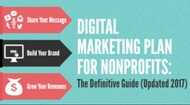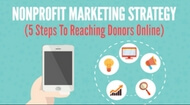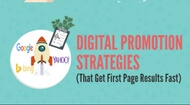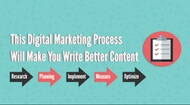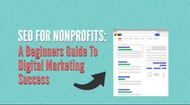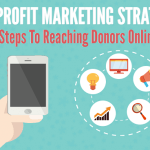Digital Marketing Plan For Nonprofits: The Definitive Guide (2018)

When you’re feeling overwhelmed by digital marketing it’s best to step back from the day to day to reevaluate your situation.
A good place to start is with your digital marketing plan.
This plan should be actionable and include specific steps and strategies you’ll take to achieve your marketing goals, while also translating the strategic vision of your organization.
We’ve broken the first chapter of this guide into four steps:
- Define your digital marketing goals
- Set expectations to measure digital marketing success
- Uncover target audience insights to get your content read
- Bring your digital marketing strategies together to establish an online brand

This is perfect for you whether you’re flying solo, have the support of a team, or are working with an agency/consultant.
Are you ready to get started?
Digital Marketing Plan Chapters
Why Nonprofits Need A Digital Marketing Plan
Did you know that last year people in the U.S. gave $31 billion dollars online?
With six years of steady growth, one could argue that there has been a shift in preference for how donors are choosing to support their nonprofit.
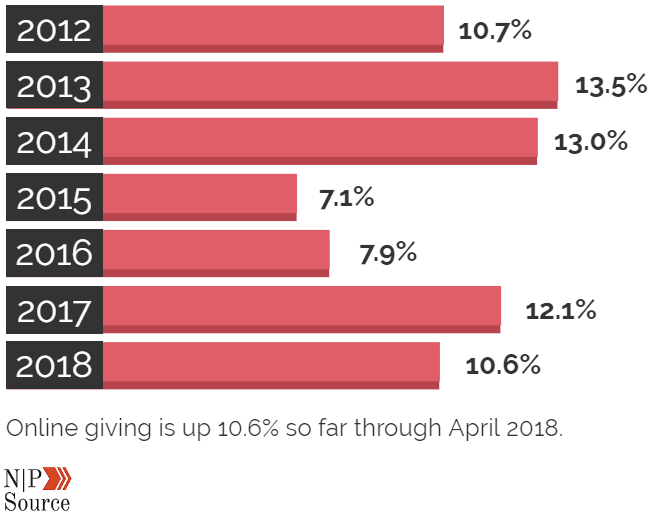
This creates an opportunity for organizations that are looking to expand their brand presence online in order to connect with their audience – and likeminded individuals.
Despite how difficult digital marketing can be, people still tend to approach it like this:
- Create a piece of content
- Share on social media
- Move on to the next project
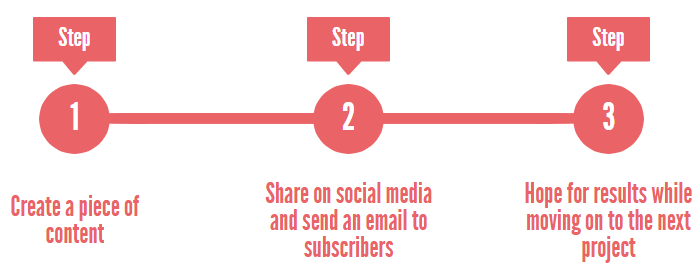
Let’s take a look at why this doesn’t work.
First, it’s easy for content to get lost in the 2 million blog posts published every day.
You may have thought you wrote something of value, but none of that matters if your website isn’t being found by potential visitors.
Second, social media isn’t enough on its own to expose your organization to a new audience.
These platforms make their revenue from advertising giving them no incentive to show your post to thousands of feeds unless you pay for it.
An internal study of 1,000 nonprofit websites found that people are 7 times more likely to visit a nonprofit’s website in a search result then they are through social media.
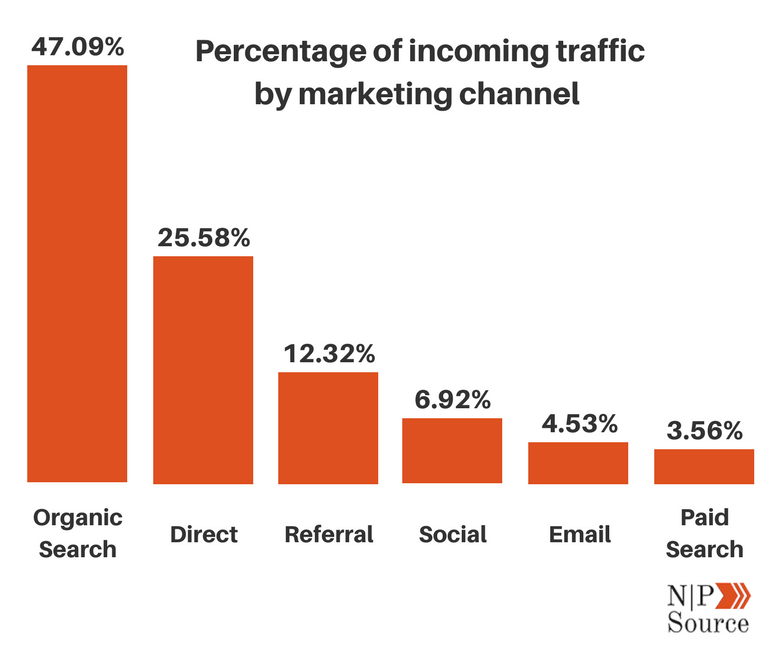
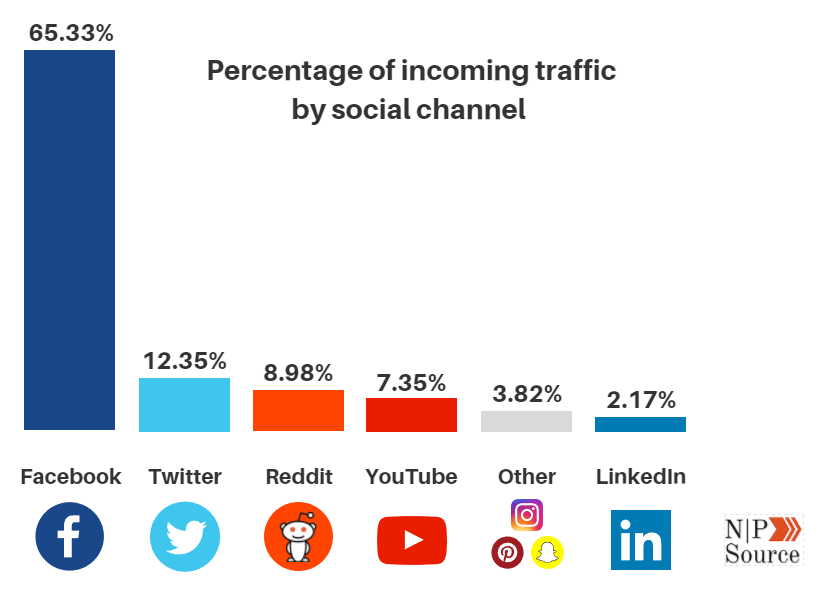
On average, visits from social media represent 6.92% (65.33% of which is driven by Facebook) of all traffic to nonprofit websites compared to 47.09% from organic search.
Step 1: Define Your Digital Marketing Goals
Defining your digital marketing goals help to identify the primary strategies you need to accomplish your objectives.
For example, what strategies would you use if your goal is to build your brand and grow your audience online?
How would you then prioritize resources so they are spent on activities that work to achieve that goal?
While these questions aren’t always easy to answer, you can chunk it down:
- What is one of your organization’s goals?
- What’s an action you need to take to achieve your goal?
- What’s a digital marketing strategy you want to focus on?
- Who on your team will be responsible for taking this action?
- When do they need to take this action?
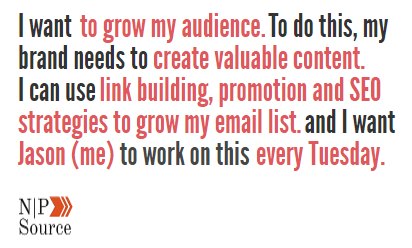
This is a goal I set that grew my email list by 86% in one week!
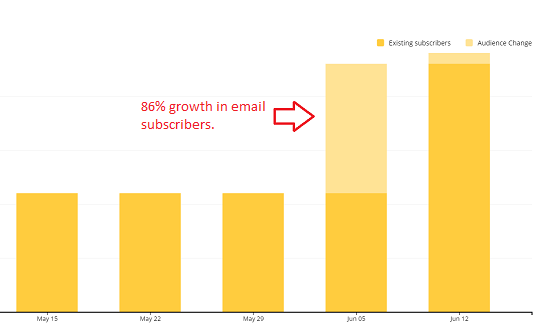
Here’s how I did it:
First, I began by publishing a blog post with a content offer that was relevant to the article.
In this case, 15 Online Fundraising Ideas That Actually Work has a downloadable checklist.
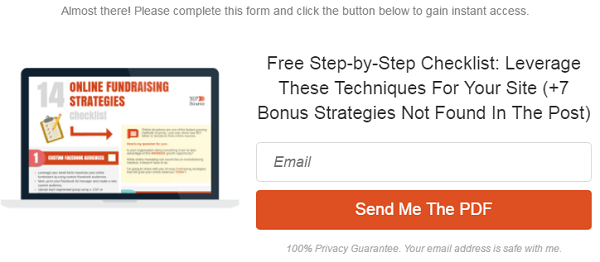
The key to convincing someone to download your offer is to go above and beyond expectations by delivering on value.
Not only does it condense the article into a 2-minute read, but this checklist doubles the value by offering 7 bonus strategies not found in the post.
Next, to maximize reach I integrated my promotion strategy across multiple channels.
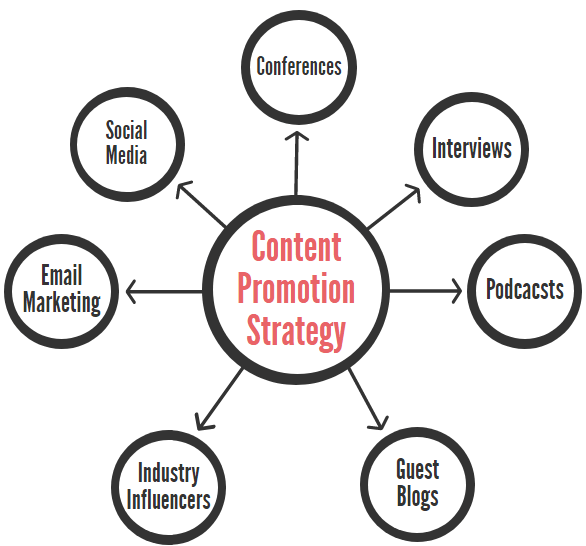
I was then able to identify my top converting channel as a Twitter ad promoting the checklist:

On average, I that found 20% of the people who clicked my ad became an email subscriber.
At a cost per click of $0.80, I spent $4.00 to get each new subscriber.
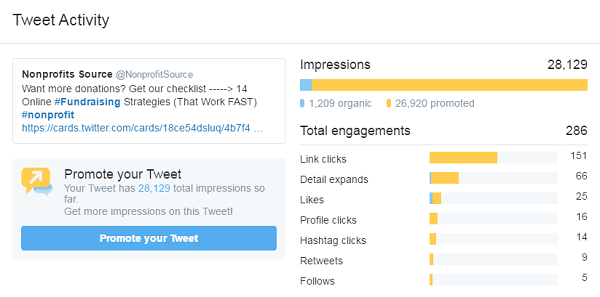
Note: Only 4.5% of all impressions were organic.
As a nonprofit, a cost per lead of $4.00 isn’t bad when you consider the average online one-time gift across sectors is $104.00.

By showing my article to social influencers in my space, I was also able to leverage their audience to share my work.
Finally, I spent a month reaching out to relevant websites to build backlinks to my page.
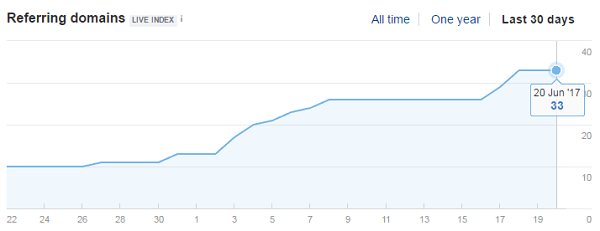
Backlinks, according to Google, are one of the top 3 search ranking factors.
What were the results?
First page on Google:

By defining my goal and aligning strategies behind it, I was able to identify:
- A content offers that both converts and is shareable
- My most valuable digital channel for this campaign
- Ranking opportunities to sustain long-term growth
Step 2: Set Expectations To Measure Digital Marketing Success
Setting expectations that align with your capabilities and resources are critical to gaining continued support from leadership.
Leadership wants to see results in their investments and it’s your job, as a marketer, to be able to show that progress.
But turning your website into an inbound lead generating and branding machine takes time and commitment.
A study by Ahrefs found that only 5.7% of all newly published pages will get to Google Top 10 within a year.
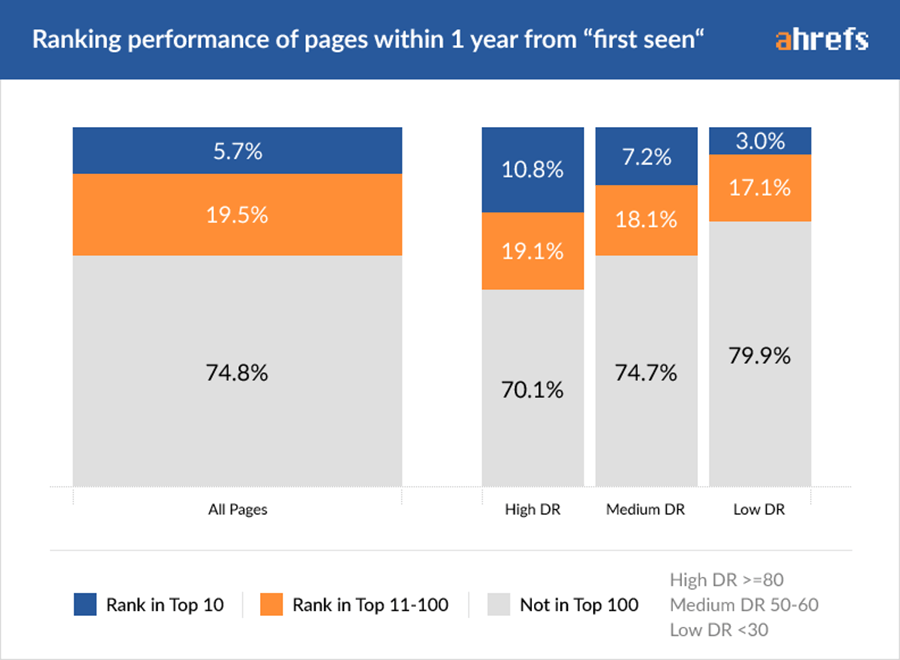
The reality is that noticeable results can take 12-18 months on average, regardless of how fine-tuned your digital marketing process is.
However, there are two ways to ensure you’re doing everything to track and measure that progress as your marketing matures:
- Tangible Measurements: Are typically revenue focused where the desired outcome is to sell a service or receive donations while accounting for expenses
- Intangible Measurements: Identity how, and most importantly why, people behave the way they do when they engage with your brand
Tangible measurements are easy to calculate and can fall into any number of ratios and equations.
Here’s a list of a few of the basics every marketer should have in their toolkit, but it is by no means exhaustive:
- Cost Per Click (CPC)
- Cost Per Impression (CPM)
- Cost Per Marketing Qualified Lead
- Cost Per Sales Qualified Lead
- Cost Per Sale (CPS)
- Click Through Rate (CTR)
- Landing Page Conversions
- Email Opt-In Rate
- Customer Lifetime Value
As your marketing ramps up, some of your focus should be on finding opportunities to lift your organic search.
The best way to measure that growth is with Google Analytics.
Within your analytics dashboard head over to Acquisition -> All Traffic -> Channels
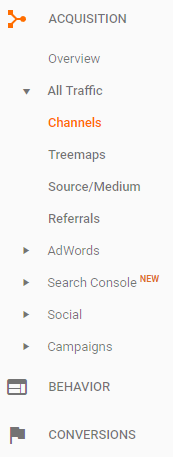
Once you select the Channels tab it will bring up a chart showing your organic traffic:
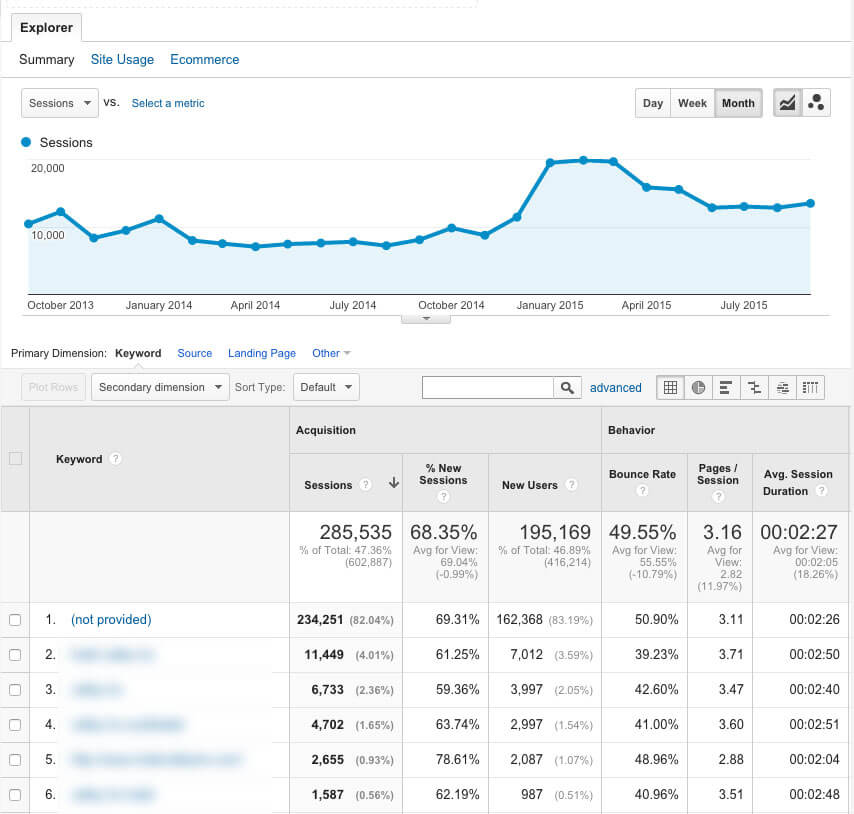
Selecting the Landing Page dimension will filter data to show individual page performance.
Another way to track organic page performance is to look at pages by clicks by navigating to Search Analytics in Google Search Console.

Once in the search analytics dashboard check the Clicks and CTR metrics and then filter by Pages.
Clicks are important because they show value. The more clicks a page receives the more valuable it must be.
Try testing page titles & meta descriptions to optimize your clicks and increase search rankings.

For example, I’ve found placing brackets in my page title tend to increase clicks.
Intangible measurements, on the other hand, are more difficult to quantify simply because people behave in unexpected ways.
To first understand this, we need to put ourselves in the shoes of those who engage with our brand.
This can prove to be difficult because it forces us to be aware of our surroundings and the surroundings of others’.
We can then uncover why visitors take a particular action on your page.
Or, why they choose to leave without converting.
Was the information not appealing? Was the data not convincing? Is the layout of your site overwhelming? Is the donation process frustrating?
Fortunately, the technology exists to help us answer some of these questions.
Heat Maps, Click Maps And Session Recorders
I’ve recently come across a tool called Hotjar, that analyzes how people behave when they land on your site.
Heat maps and click maps are helpful to show what content is most useful to visitors.
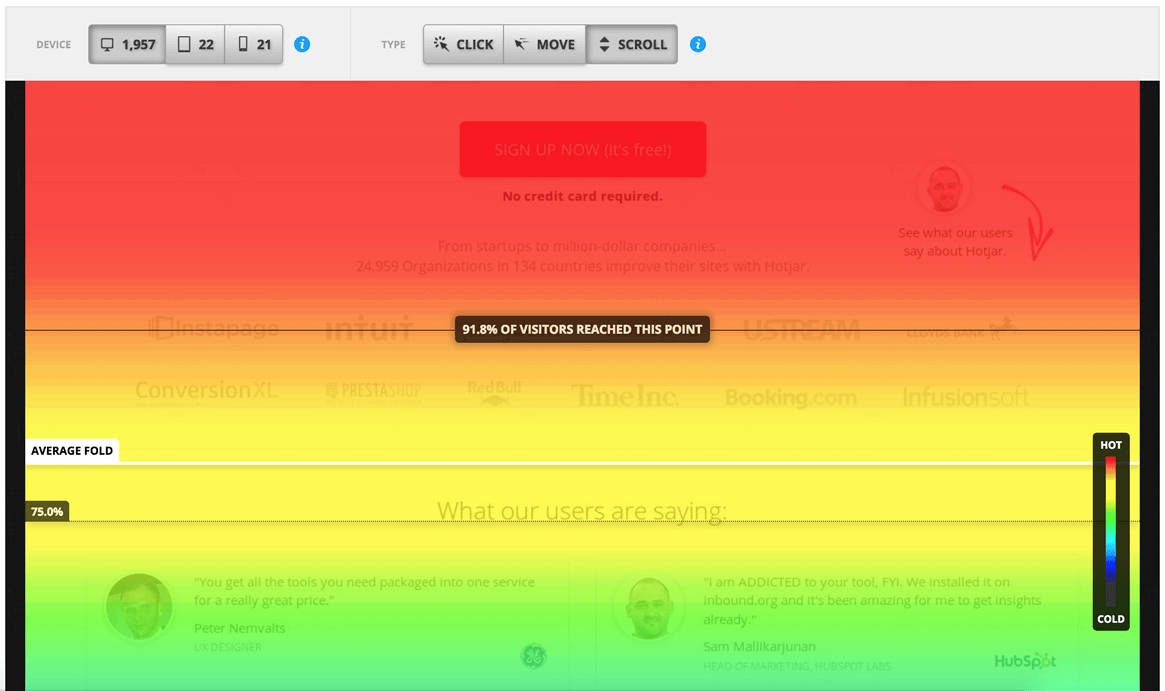
You can see where people fall off from your page or if interactive content, like videos, get watched.
My favorite feature by far is the recording tool that screen captures visitor activity and behavior.
Of course, these tools are not enough on their own to provide insight into your audience’s needs.
For that, you’ll need to dig a little deeper into audience pain points and interests.
Step 3: Uncover Target Audience Insights
Your content may be well written and relevant, but none of that matters if your audience isn’t interested in reading it.
This is why persona research is so important.
An easy way to start is to answer objections and pain points while writing for donor intent.
For example, did you know the phrase, “where to donate furniture,” is searched 990 times per month?
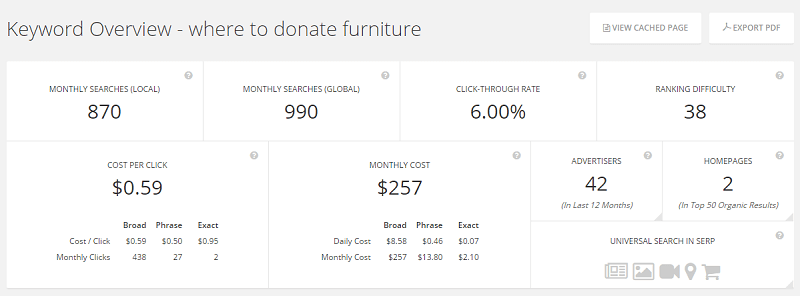
By acknowledging this pain point, Habitat For Humanity set up a page that targets the phrase:

What’s the result?
Over 10,000 visits every month.
They then use that traffic as an opportunity to target donors by adding a call to action.
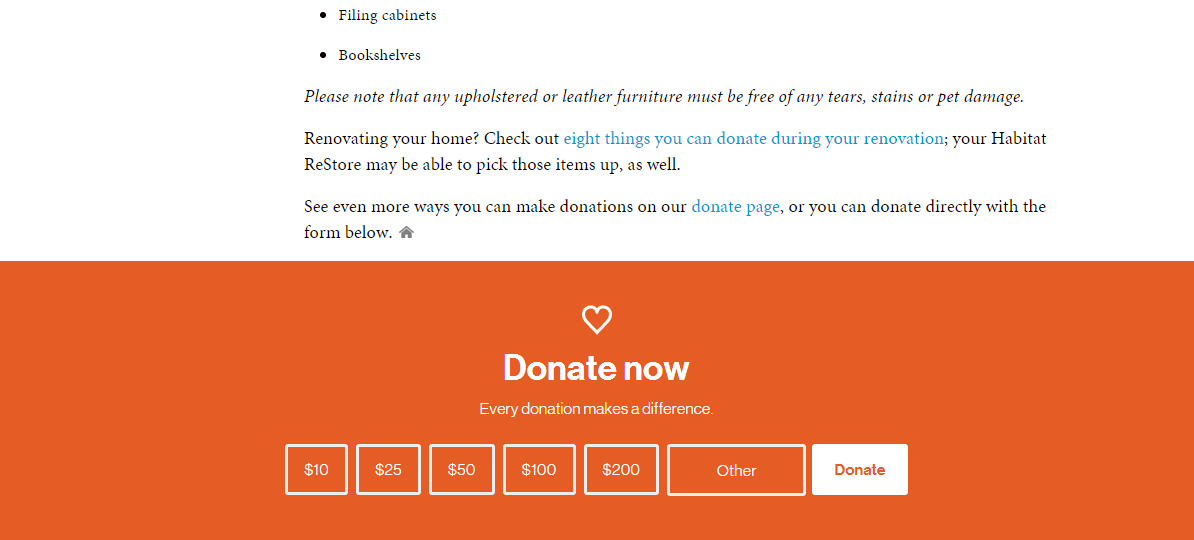
Here’s the best part:
You can uncover audience insights to get search traffic like Habitat For Humanity:
- Survey visitors to your website
- Track audience engagement
- Leverage Facebook audience insights
Survey Visitors On Your Website
Sending a survey to your email subscribers is one of the best ways to gain insight into their wants and needs.
But what if instead of surveying your subscribers, you could also survey anyone who visits your site?
That’s exactly what Qualaroo does.
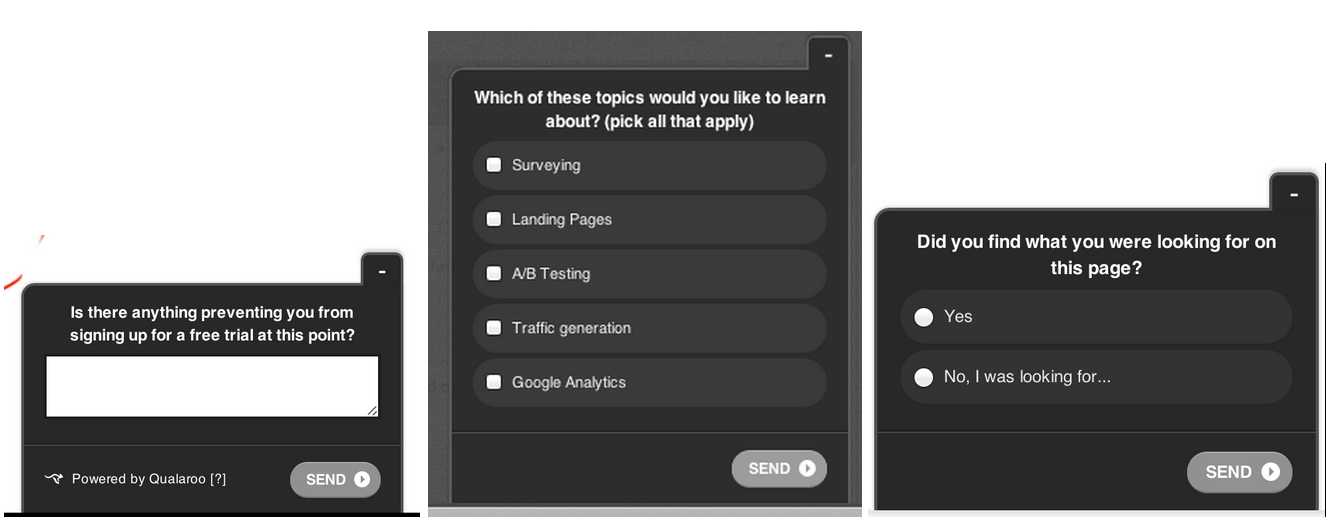
By placing a survey tool on your website you can prompt visitors to answer 1 to 2 step survey questions.
Start by asking about the kind of topics they want to read, the content medium they enjoy most or which channel they prefer to receive updates from your organization.
You can even ask visitors what their willingness is to pay for webinars, training sessions or memberships to price your offers.
Online surveys also provide a way to collect data from your audience as you continue to write content to meet their needs.
Track Audience Engagement
By looking at social engagement you can determine trends in the type of articles or offers your audience enjoys and shares most.
For example, the American Diabetes Association tend to receive a high amount of engagement for research related posts:
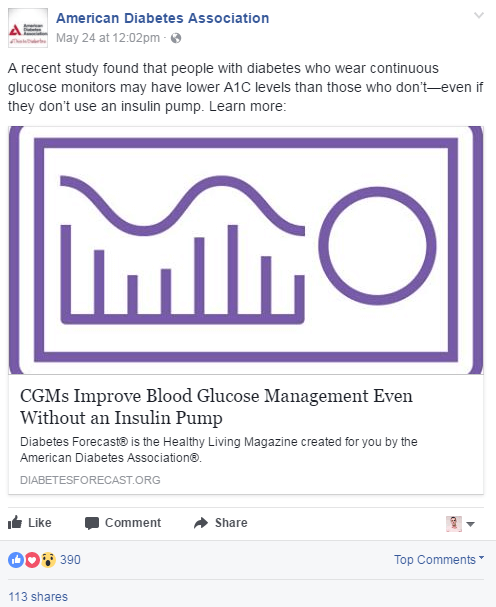
While recipe posts on average receive 60%-85% less engagement:
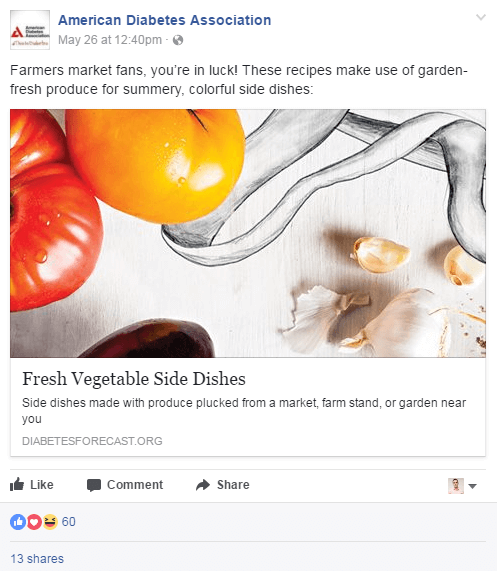
Let’s take this research a step further by using Buzzsumo to identify if research or recipes receive the most social shares on the topic of diabetes.
The top 10 articles on diabetes research average 17,188 shares.
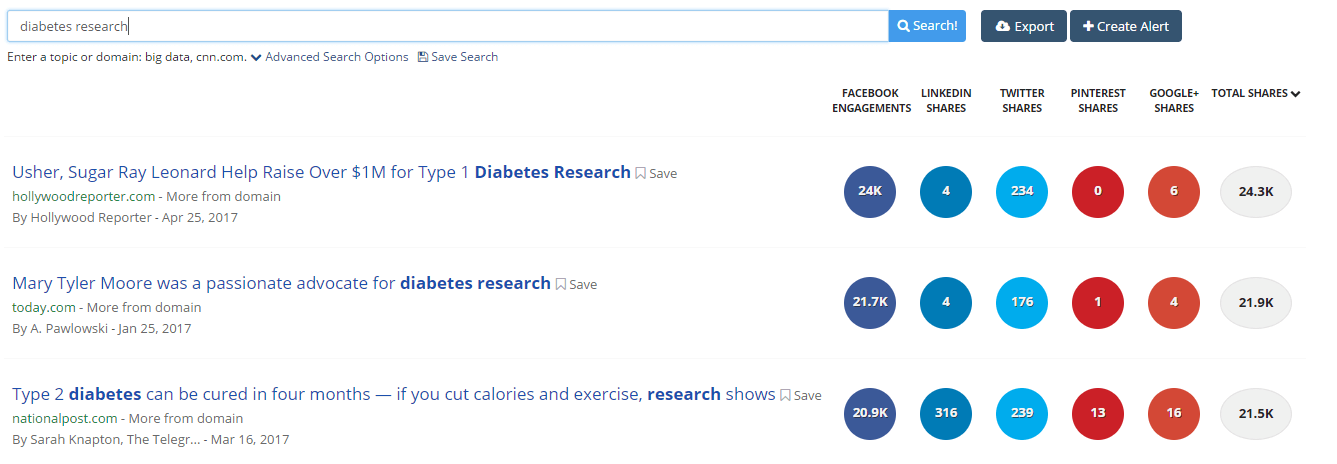
While the top 10 articles on diabetes recipes average 12,366 shares…

This exercise will you give an idea of what topics will get the most social exposure for your organization.
Facebook Audience Insights
Leveraging Facebook audience insights goes even deeper by providing the demographics, interests, likes, and behaviors of your audience.
Here’s how it works:
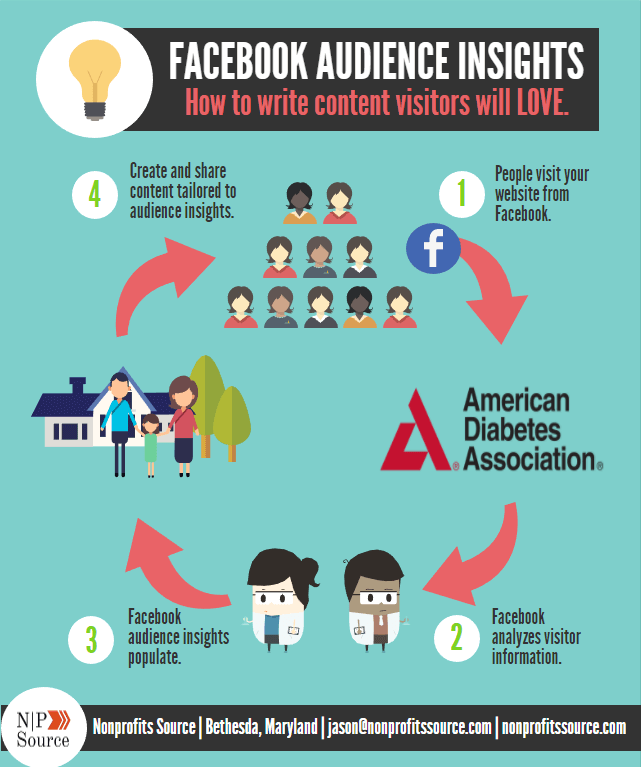
You can follow these three simple steps to start collecting data from Facebook TODAY:
- Step 1: Set up a Facebook pixel on your site.
- Step 2: Create a custom Facebook audience that targets people who visit your site.
- Step 3: Wait a few days for the data to populate before visiting Audience Insights.
Navigating around the data is easy, but requires admin and advertiser level permissions for your organization’s Facebook page.
Once the demographic information populates you’ll gain access to audience insights.
For example, the page likes tab shows all the pages your visitors like:

Top categories show everything from their favorite actors/actresses to their political viewpoint:
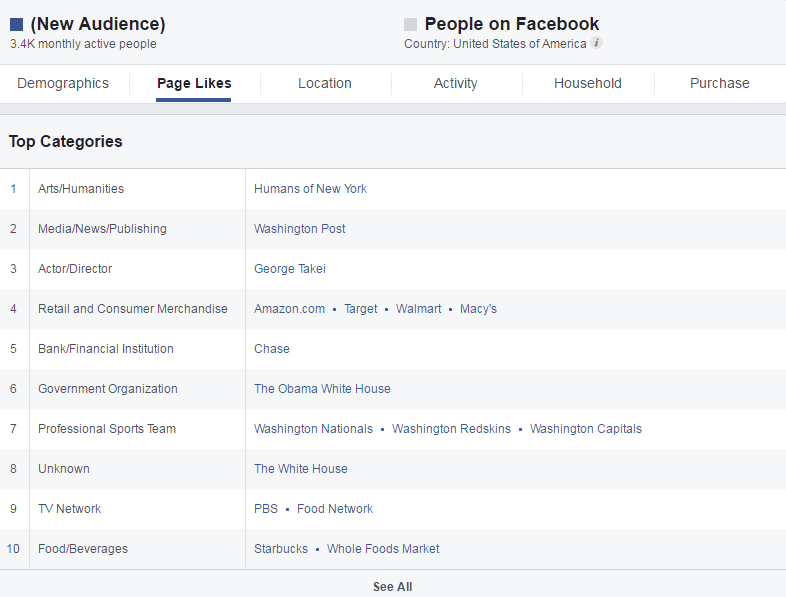
If you’re looking for demographic information then you might be interested in the household tab, which gives a snapshot of the estimated household income:
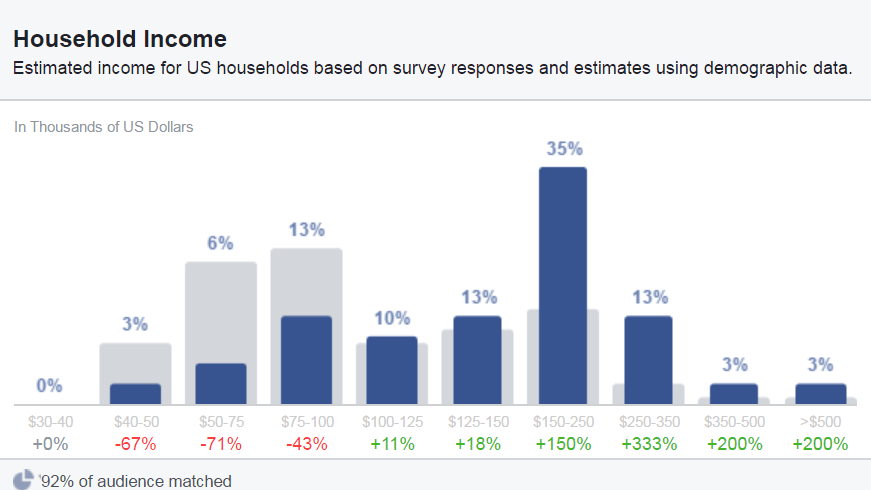
As well as spending habits:
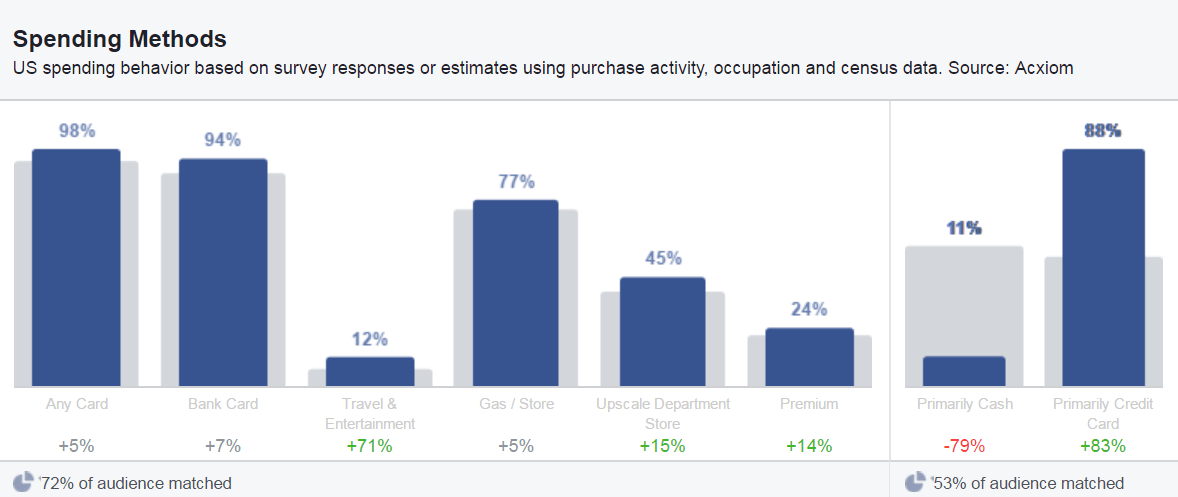
You can segment your audience further by using the left drop-down menus.
For example, you can filter out visitors who have donated to a charitable cause in the past.
Under the Advanced drop down go to Behaviors and then Charitable Donations:

It’s important to note that this data is useless unless you can draw insights from it.
If you notice that 75% of your audience likes The Daily Show, then you might consider adding references from the show to aid in your storytelling.
Step 4: Bring Your Digital Marketing Strategies Together By Establishing An Online Brand
Even with a marketing goal and insight into your audience’s needs, getting results can be tough.
In a recent study conducted by HubSpot, 63% of marketers say their top marketing challenge is generating traffic and leads.
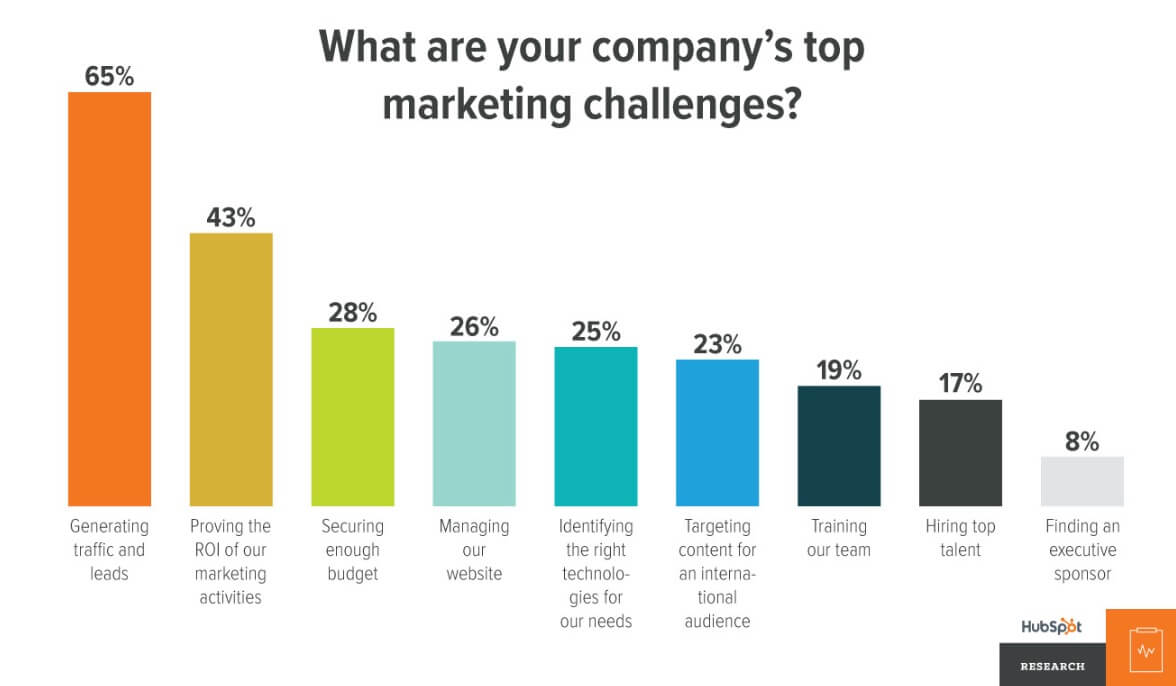
This got me to thinking:
“What about the other 37% of marketers? Are they swimming in traffic and leads?“
Maybe not.
But, I was curious how some of these online brands became so successful.
Take the ALS Association for example.
Their website averages 400,000 visits per month.
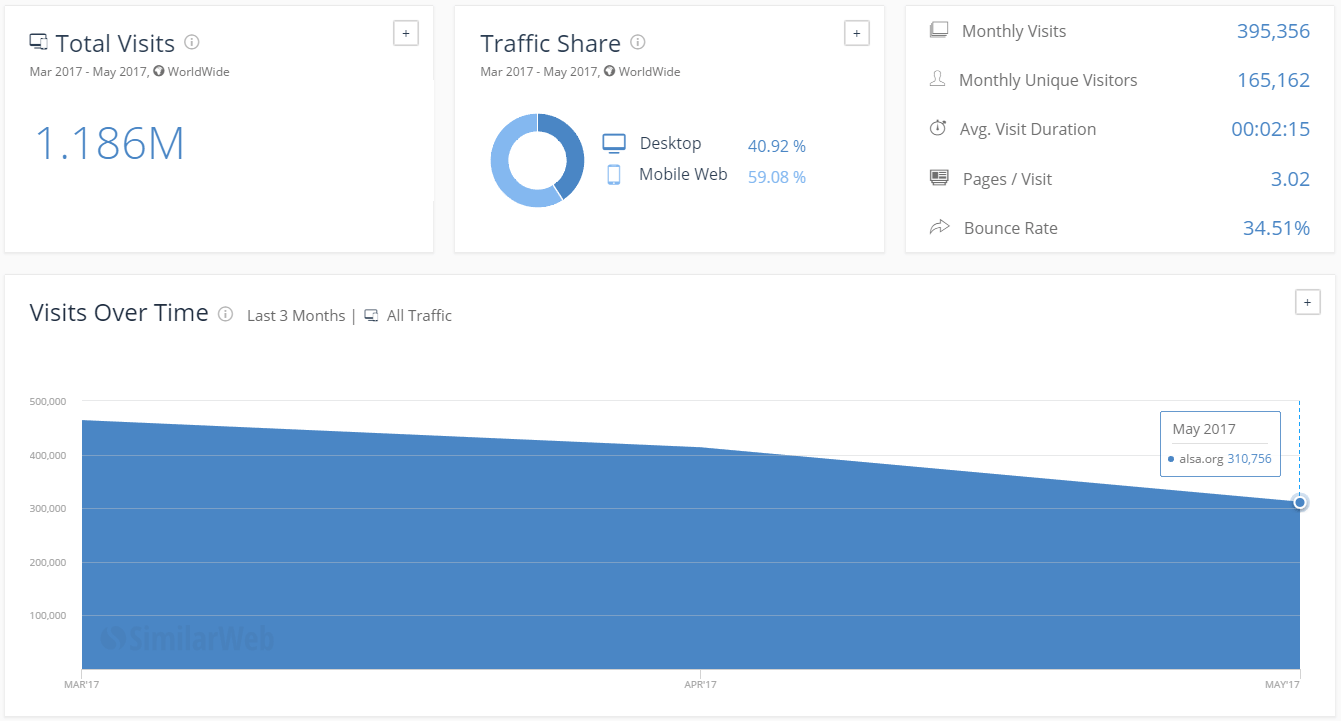
Digging a little deeper into the traffic metrics I found something interesting:
- 250,000, or 58% of all monthly traffic is organic search.
- The keyword phrase with the highest traffic is ALS.
- The top page at 10% of all organic traffic is the home page.
This isn’t a coincidence.
I found the same to be true when looking at all the top nonprofit websites.
The majority of web traffic for most organizations come from branded keywords.
Branded keywords are phrases that people search for and associate with your brand.
Remember the Ice Bucket Challenge?
Before 2014, it didn’t mean anything.
Fast forward to 2017 and the phrase is searched over 60,000 times per month, is an annual event that generates millions of dollars in donations and is synonymous with the ALS Association.
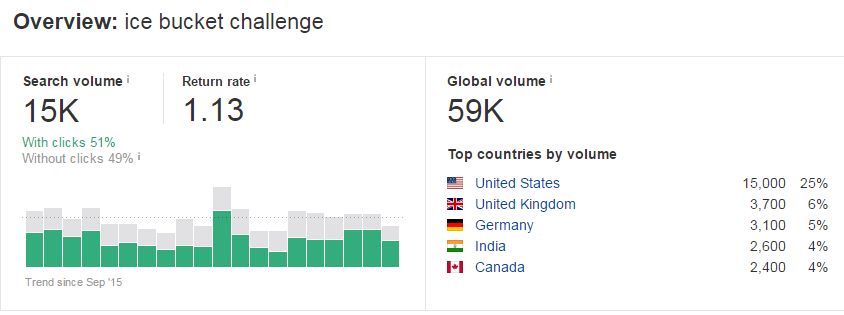
The phrase is so popular that it even has it’s own Wikipedia page.
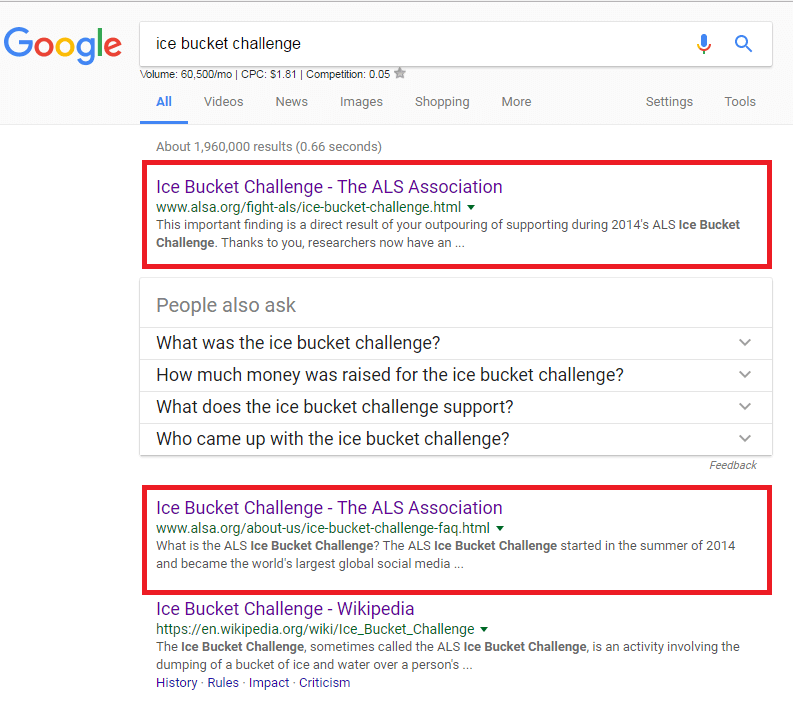
Because the ALS Association were the first to use Ice Bucket Challenge in their digital marketing, their website built authority and trust for that phrase.
So how can you create branded keywords that will generate awareness for your organization?
It all starts by integrating your content marketing strategy.
Pat yourself on the back, you’ve just completed chapter 1 on how to create a digital marketing plan for nonprofits… Congrats!
Here’s a quick recap of what we learned:
- A digital marketing plan – supports your message driving traffic to your site while convincing visitors to take an action.
- Define your marketing goals – to help identify your primary strategies to get results.
- Setting expectations and KPIs – to measure your digital marketing success.
- Uncover audience insights – and align your content offerings to match their needs.
- Create a strong online brand – to establish authority on the topics you write about.
Related Articles:
- Digital Promotion Strategies (That Get First Page Results Fast)
- This Digital Marketing Process Will Make You Write Better Content
- SEO For Nonprofits: A Beginners Guide To Digital Marketing Success
- The Best Social Media Resources For Nonprofits
- How To Create Successful Digital Marketing Goals That Get Results


